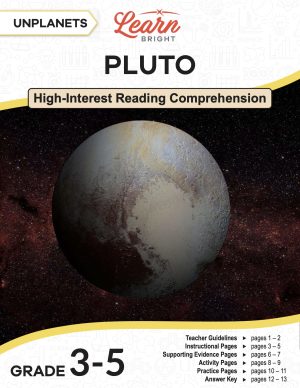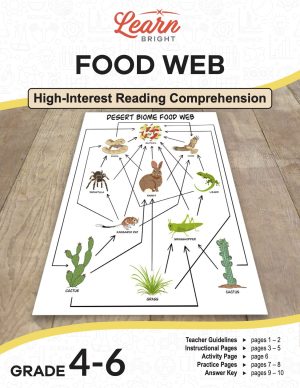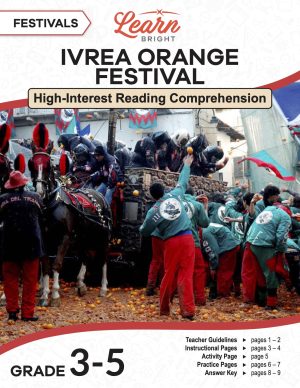Description
What our Friction lesson plan includes
Lesson Objectives and Overview: Friction introduces students to the force that determines how much resistance an object has when in motion. Students will be able to provide examples of friction in action and relate the concept to the force of gravity. This lesson is for students in 5th grade and 6th grade.
Classroom Procedure
Every lesson plan provides you with a classroom procedure page that outlines a step-by-step guide to follow. You do not have to follow the guide exactly. The guide helps you organize the lesson and details when to hand out worksheets. It also lists information in the yellow box that you might find useful. You will find the lesson objectives, state standards, and number of class sessions the lesson should take to complete in this area. In addition, it describes the supplies you will need as well as what and how you need to prepare beforehand. For this lesson, you will need a variety of supplies, such as sandpaper, rubber mats, glue, tape, stopwatches, pillowcases, and plastic bags. For a full list, review this section on the classroom procedure page.
Options for Lesson
The “Options for Lesson” section of the classroom procedure page lists a number of suggestions for ideas and activities you could incorporate into the lesson. Have students use different object types to roll down the ramps and see which object does better at different surface types. For example, students could use a bouncy ball, a wadded-up piece of paper, a cardboard tube, or different-sized toy cars. If there is no slide available, try having students push each other on these mats down a specified length of hallway and time themselves. Be sure to use the same person pushing each time for accurate results!
Teacher Notes
The teacher notes page provides an extra paragraph of information to help guide the lesson. You can use the blank lines to write down any other ideas or thoughts you have about the topic as you prepare.
FRICTION LESSON PLAN CONTENT PAGES
What Is Friction?
The Friction lesson plan has two pages of content. Friction is the resistance of motion when one object rubs against another. The lesson presents a likely scenario that most if not all students have experienced: sliding along a floor with socks on. The reason we glide across the floor is that the two surfaces don’t cause much friction.
Trying to slide on carpet, however, is quite difficult or even impossible. Anytime two things rub against each other, they cause friction. Sometimes there is more friction than at other times. Carpet provides too much friction to allow us to glide across it. But tile has little resistance, so we can glide quite well. What’s cool is that friction occurs between all types of matter—solids, liquids, and gases.
When we ride a bike and the wind blows straight at us, it is harder to pedal forward. This is because the air creates resistance. Air resistance is a form of friction between a moving object (us on our bike) and air (the wind coming at us). It slows down the movement of the object, in this case, us. However, the air resistance can be changed by streamlining. Streamlining reduces air resistance or friction based on the design of the object. For example, cars and airplanes are round and smooth to minimize friction with the air.
More or Less
Some substances cause more friction than others. Rough surfaces are described as high friction because they slow down the movement of an object. We can think of the carpet stopping our socks from sliding as another example. Smooth surfaces are defined as low friction because they allow more movement, just like a tile floor.
The soles of our shoes keep us from slipping around, which helps us walk. But it’s a different story when it comes to walking on ice. We slip and slide all over the place, reaching out and trying to grab something so we don’t fall. If we didn’t have friction, it would feel like that every time we tried to walk. Similarly, students will learn that without friction, we couldn’t write. Friction rubs millions of carbon atoms from the end of a pencil onto the paper. So, because of friction, people can draw, paint, and write with ease.
When one object starts to slow down because of friction, it loses energy. But the energy doesn’t just disappear. Instead, it changes from kinetic (moving) energy to heat energy. That’s why, when we rub our hands together and generate friction, it creates heat. Two main factors influence the total amount of friction: coefficient of friction and the force between objects. The coefficient of friction is the roughness of an object’s surface.
Types of Friction
There are also different types of friction: dry friction, fluid friction, and rolling friction. Dry friction happens when two solid objects touch each other. This type further divides into static (object are not moving) and kinetic or sliding (objects are moving) friction. Fluid friction involves liquid or air. Finally, rolling friction occurs when a round object rolls over a surface.
Sometimes we want to prevent friction so that it’s easier to move something. For example, we can refer to the gears on a bike. We want the gears to have some friction but not too much. If there is too much, the gears might lock up and stop the bike wheels from turning. In cases where we want to prevent too much friction, we can use things like grease, oil, or other lubricants.
It is also possible to reduce friction, depending on the type of material we use. This is because each material has a different coefficient of friction. For example, steel is smooth and produces less friction than sandpaper, which is bumpy or gritty.
FRICTION LESSON PLAN WORKSHEETS
The lesson plan includes three worksheets: an activity worksheet, a practice worksheet, and a homework assignment. Each one will help students solidify their grasp of the material they learned throughout the lesson. You can refer to the classroom procedure guidelines to know when to hand out each worksheet.
RAMP CONSTRUCTION ACTIVITY WORKSHEET
Students will choose three materials with which they will build ramps. The ramps should be next to each other and at the same angle during the experiment. Using a stopwatch, students will time how quickly a box car goes down the ramps. They will use a ruler to measure how far the cars travel before they stop. There are two questions for them to answer before the experiment. Once they finish their responses, they will fill out the table on the worksheet.
SLIDING DOWN SLIDES PRACTICE WORKSHEET
You will divide students into groups for the practice portion of the lesson. Each group member will sit on the surface “mat” and slide down a slide. Someone else in each group will time the student and record the information in the chart on the worksheet page. Once all students have gone down the slide using the various mats, they will answer the questions at the bottom of the page.
FRICTION: HELPFUL OR PROBLEMATIC HOMEWORK ASSIGNMENT
For the homework assignment, students will review a list of actions and decide whether or not friction is helpful or problematic in the situation. They will write their response in the second column of the table and provide an explanation in the third column.
Worksheet Answer Keys
The practice and homework worksheets both have answer keys at the end of the lesson document. All the correct answers are in red to make it easy to compare them with students’ work. Answer will vary on most of these questions given the nature of the assignments. If you choose to administer the lesson pages to your students via PDF, you will need to save a new file that omits these pages. Otherwise, you can simply print out the applicable pages and keep these as reference for yourself when grading assignments.









